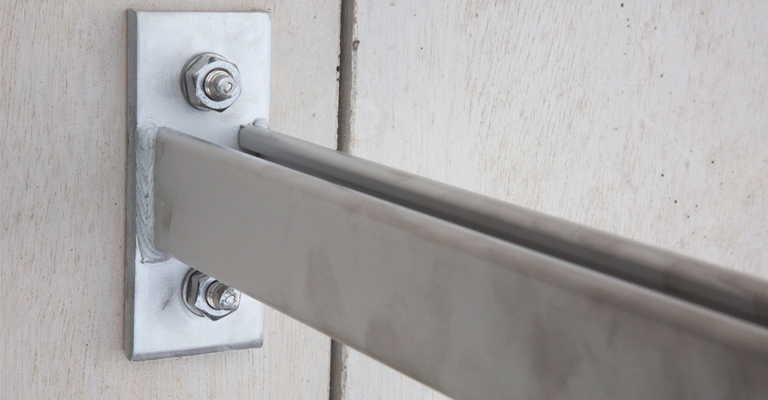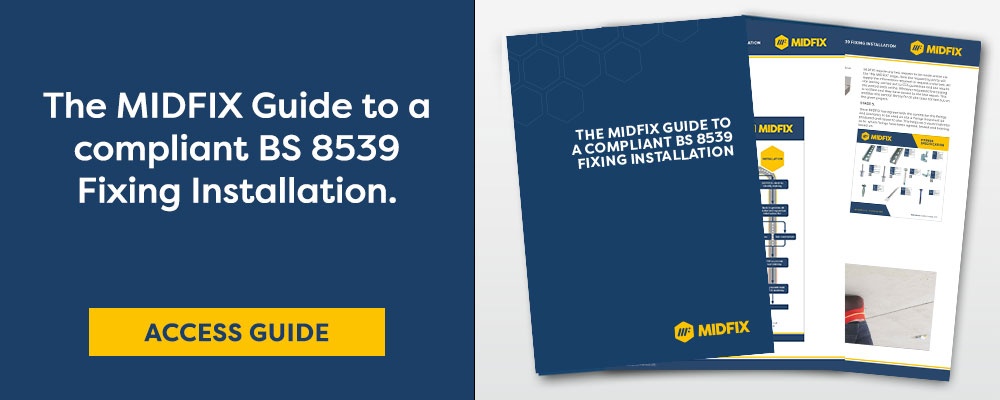What is the function of throughbolts?
In our latest sound-out episode Stevan Grkinic discusses Throughbolts, providing an overview of the following:
- What are throughbolts?
- What are the installation issues with throughbolts?
- How to correctly set a throughbolt – BS 8539 guidance
- What are the disadvantages of selecting a throughbolt?
- Should an ETA approved throughbolt be specified?
- BS 8539 overview
- BS 8539 selection criteria
What are throughbolts?
Throughbolts are a type of torque-controlled anchor used in concrete, once fixed they expand, they rely on friction and must be installed using a torque wrench. Overall, they are a high-performance anchor that are relatively inexpensive.
What are the installation issues with throughbolt?
Throughbolts, as the name suggests, are suited to through-fix installations because they fix straight through the fixture into the substrate. This method is prone to putting a lot of stress onto the substrate. It is essential that you use a torque wrench when installing a throughbolt, it is simply not possible to install without one. The torque applied sets the anchor and it also creates the clamping force.
It is common for installers to overtighten throughbolts using a long lever, you may think that tighter is better, however, all that this will achieve, is over-stressing the anchor. If you under torque the throughbolt you run the risk of the fixture moving after load relaxation, therefore it is very important to use a torque wrench to install a throughbolt anchor correctly.
When installing throughbolts, it is essential to drill the right sized hole, the diameter is labelled in the manufactuer's instructions.
How to set a throughbolt – BS 8539 guidance
A throughbolt should always be set using a torque wrench at the correct torque setting BS 8539 offers further advice:
‘Anchors should be tightened to the manufacturer’s recommended torque settings. This will ensure that anchors are consistently set to achieve the maximum load and the anchor material is not over-stressed’.
Expansion anchors must not be fixed to close together, as when the anchor expands it can lead to an increased stress load onto the substrate and potentially cause the substrate (concrete) to fail.
What are the key disadvantages of a throughbolt?
The problem with all expansion anchors is that they suffer from load relaxation, when you have torqued it up correctly they will relax. The stress in the bolt will be dissipated into the substrate over a given period of time.
Should I specify an ETA approved throughbolt?
With an ETA-approved anchor – that drop in tension is taken into account. When you have torqued the anchor to the correct setting you know there is still sufficient clamping force to stop the fixture from moving.
Remember, regardless of the type of anchor, it is important to follow the correct selection procedure as outlined in BS 8539.
What is BS 8539 and how can it guide me?
BS 8539 was published in 2012 and its purpose is to guide designers, specifiers, manufacturers, suppliers, contractors, installers, and testers of anchors, to ensure a safe and compliant install.
When selecting an anchor, what factors should be considered?
- Substrate
- Loadings
- Environment
- Type of anchor
- Type of anchor installation
- Approvals
If you are a stakeholder within the anchor supply chain, BS 8539 provides practical guidance outlining the responsibilities of your role in the selection, supply, installation, and testing of anchors.







